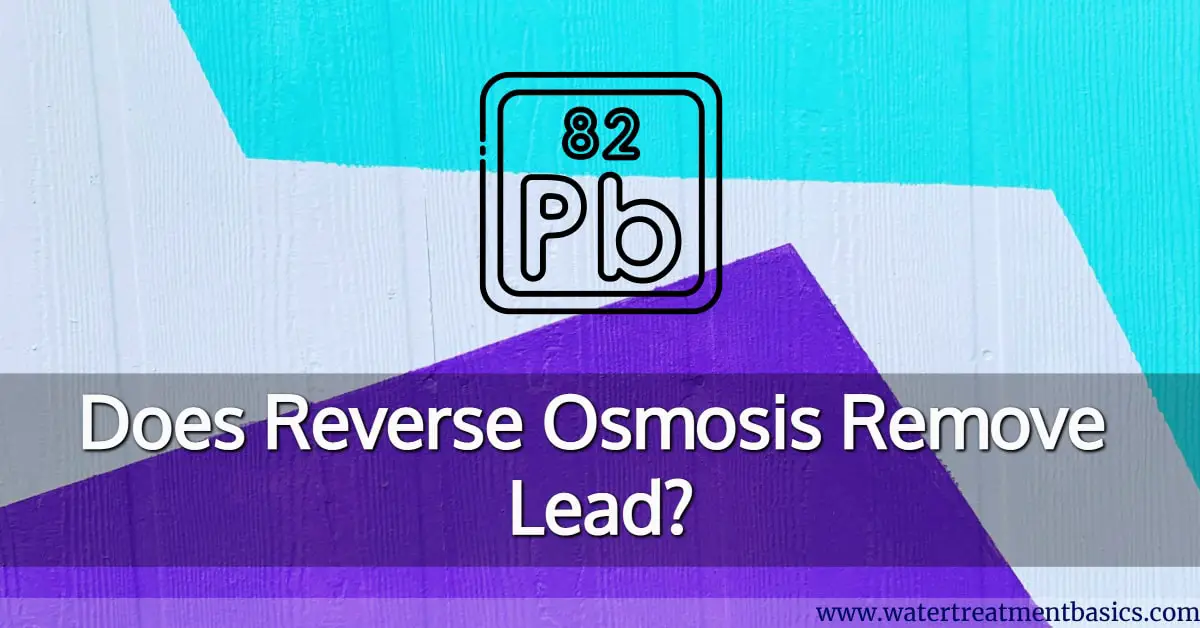Reverse osmosis is a water purification process that has been used for decades to remove a wide range of contaminants from water, but does reverse osmosis remove lead?
Lead is a heavy metal that is found in water, with sources ranging from corrosion of older pipes to agricultural and industrial runoff. Lead can have serious health implications, including damage to the nervous system, reproductive system, and kidneys.
In this blog post, we’ll discuss whether reverse osmosis is an effective way of removing lead from water and how to ensure your home is safe from this hazardous material. We’ll also look at some of the additional benefits of using reverse osmosis filtration and how to identify other sources of lead in your home.
Does reverse osmosis remove lead?
Does Reverse Osmosis Remove Lead? The short & simple answer is Yes.
Reverse osmosis is a filtration process that removes many impurities from water, including lead. The process works by forcing water through a semi-permeable membrane that is designed to only allow water molecules to pass through.
Lead, along with other contaminants, is too large to pass through the membrane and is thus filtered out. In addition, reverse osmosis systems often include additional filters that remove other contaminants, such as sediment and chlorine, which can also help reduce lead levels.
What is lead?
Lead is a chemical element with the symbol Pb and atomic number 82. It is a heavy metal that is denser than most common materials. Lead is soft and malleable, and has a low melting point. It is also highly resistant to corrosion.
It has many uses, including in the construction industry, as a radiation shield, and as a component of batteries. However, lead is also highly toxic and exposure to it can cause serious health problems, especially in young children.
Lead is a toxic metal that can be found in drinking water, especially in older homes and buildings. Lead can leach into water from pipes, fittings, and other plumbing materials that contain lead, or from lead service lines that connect homes and buildings to water mains.
Lead can also be found in some types of water pipes, faucets, and other fixtures.
How does lead get into drinking water?
Lead can enter drinking water through a variety of sources:
- Lead pipes and plumbing: One of the most common sources of lead contamination in drinking water is old lead pipes and plumbing. Many older homes and buildings have lead pipes, which can leach lead into the water as it passes through.
- Corrosion of lead-containing materials: Corrosion of lead-containing materials, such as lead-based solder and brass fixtures, can also release lead into drinking water. This can happen when the water is acidic or has a low mineral content.
What other methods are available to remove lead?
- Water filtration systems: There are a variety of water filtration systems available that can remove lead from drinking water. These systems use different types of filters, such as carbon filters or ceramic filters, to remove contaminants from the water. Some systems are designed specifically to remove lead, while others are more general-purpose and can remove a wide range of contaminants.
- Boiling water: Boiling water can kill bacteria and other harmful microorganisms, but it is not an effective method for removing lead from drinking water. Lead is a heavy metal that will not evaporate or boil off when the water is heated.
- Distillation: Distillation is a process that involves boiling water and collecting the steam, which is then condensed and cooled to produce purified water. This process can remove lead and other contaminants from drinking water, but it is a slow and energy-intensive process. It is also not practical for large-scale water treatment.
Advantages of Reverse Osmosis For Lead Removal
There are some advantages of reverse osmosis for lead removal:
- Effectiveness in removing lead: As mentioned earlier, reverse osmosis is highly effective in removing lead from drinking water.
- Can remove a wide range of contaminants: In addition to lead, reverse osmosis can remove many other contaminants from drinking water, making it a very effective method of water treatment.
- Easy to install and maintain: Reverse osmosis systems are relatively easy to install and maintain, making them a convenient option for many households.
Conclusion
Overall, reverse osmosis is an effective method of removing lead from drinking water. Though reverse osmosis is not the only method to remove lead, it is a reliable and efficient option to consider.
It is important to remember to routinely test the water to ensure that lead levels remain low and that the filter is properly functioning.
